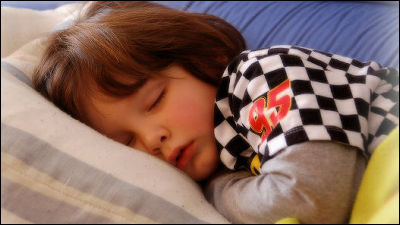Smartphone “night mode” may interfere with sleep due to adverse effects

by
Recent smartphones have a `` Night Shift '' function, and at night, the blue light is reduced and the screen color becomes a yellowish color closer to the warm color, reducing the burden on the eyes It has been with. However, an experiment conducted by a research team at the University of Manchester has raised the possibility that `` Blue light has no effect to disturb sleep as widely thought, and yellowish light has a greater influence on sleep ''. .
Cones Support Alignment to an Inconsistent World by Suppressing Mouse Circadian Responses to the Blue Colors Associated with Twilight: Current Biology
https://www.cell.com/current-biology/fulltext/S0960-9822(19)31368-5
Researchers discover when it's good to get the blues
https://www.manchester.ac.uk/discover/news/researchers-discover-when-its-good-to-get-the-blues/
Not such a bright idea: why your phone's 'night mode' may be keeping you awake | Technology | The Guardian
https://www.theguardian.com/technology/shortcuts/2019/dec/17/not-such-a-bright-idea-why-your-phones-night-mode-may-be-keeping-you-awake
It is known that melanopsin, a photoreceptor in optic nerve cells, is deeply involved in the regulation of human circadian rhythm . Melanopsin detects the brightness of the light that enters the eye, determines the day length, and secretes the hormone melatonin that synchronizes biological functions with circadian rhythm.
According to Brown, the melanopsin system is excellent at detecting short-wavelength light, and has been thought to be particularly sensitive to blue light, which has a short wavelength, among visible light. Normally, the amount of melatonin secretion decreases during the day and increases at night, but when you look at the blue light at night, the melanopsin is judged to be “daytime” and the secretion of melanopsin is suppressed. It is supposed to end up. From this point, the idea of reducing the blue light from the screen and not disturbing the circadian rhythm was 'based on a scientifically valid idea,' said Dr. Timothy Brown from the University of Manchester. Says.

by
However, not only melanopsin responds to color, but also cone cells, a type of photoreceptor that has been known for a long time, play an important role in human perception of color. Therefore, Mr. Brown's research team conducted an experiment to investigate how the intensity and color of the light applied to the mouse affects the circadian rhythm using lighting that can freely change the brightness and color of the lighting. I did it.
As a result of analyzing the effects of various light conditions on the circadian rhythm of mice, it was found that the intensity of the luminance was greater than the shade of light. In addition, when the brightness is the same, it seems that yellowish warm colors have a greater influence on the circadian rhythm than bluish light with a lot of blue light.
“Our common perception that blue light has the strongest influence on the body clock is wrong. In fact, a bluish light similar to that at dusk is a white or yellow light of the same brightness. 'It has less impact on the body clock.' Because the light at sunset is darker and bluish than the daytime light, the color of the screen seen at night is as blue as at sunset, it may be difficult to disturb the circadian rhythm . In contrast, white and yellowish screen colors close to daylight can disrupt circadian rhythms.

by sik92
The existing night mode is based on the idea of adjusting the wavelength of the light emitted by the screen and reducing the effect of blue light on melanopsin. On the other hand, the screen color change affects not only the melanopsin but also the pyramidal cells, so the demerit of the color change may outweigh the benefits gained from the reduction of blue light. Brown argues that the approach is not the best.
At the time of writing, the research results were derived from mouse experiments, but “we believe there are good reasons for this to apply to humans,” commented Brown. Rather than paying attention only to the color of the screen, more fundamental measures such as “Do not use a smartphone before going to sleep” are considered to be certain.
Related Posts:







